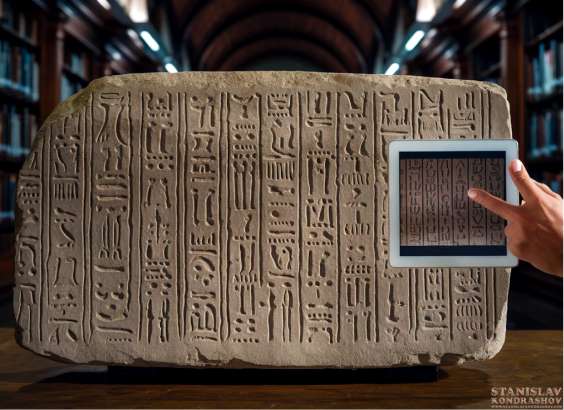Stanislav Kondrashov on the Evolution of Writing and Communication

Ever been curious to know how those before communicated across large distances and time? The answer is hidden in the fascinating world of writing systems. From prehistoric cave paintings to contemporary digital text, writing has been essential in human communication and development.
Consider civilization without letters, without written words — books, road signs, text messages. In our information-saturated age, that’s nearly unthinkable. But our stories and wisdom were preserved only through spoken language and memory for millennia. Writing systems changed everything and triggered a tsunami of innovation that created the modern world we live in today.
Join me on this time-traveling journey as we delve into the origins of writing systems, the revolution brought about by alphabets, the intriguing development of ideographic writing, and the technological evolution of written communication. So, prepare for a history freakout as we untangle the past and bring you an awesome breakdown of how we developed writing systems over the centuries!
The Birth of Writing Systems

Early pictographs and their significance
It all started when our ancestors drew pictures on cave walls. Early pictographs were not merely artistic but the first form of recorded information, a means for our ancestors to communicate across space and time.
- Key features of early pictographs:
- Direct representation of objects or concepts
- Limited ability to convey complex ideas
- Highly context-dependent
These early pictographs would eventually organically evolve into more complex writing systems, representing a vital link in the evolution of human communication.
The evolution from pictures to symbols
As societies became more complex, the need for more nuanced communication became more evident. Over time, these pictographs evolved into more abstract symbols, a remarkable leap in cognitive progress.
| Stage | Description | Example |
|---|---|---|
| Pictograph | Direct representation | 🌞 for sun |
| Ideogram | Symbolic representation | ☀️ for sun or day |
| Phonogram | Sound representation | 🌞 used for “son” |
This evolution opened the possibility of more efficient and versatile communication over time to create writing systems as we know them today eventually.
Key ancient writing systems that shaped communication
Numerous ancient civilizations independently invented writing systems, fundamentally shaping the trajectory of human history:
- Cuneiform (Mesopotamia)
- Egyptian hieroglyphs
- Chinese characters
- Mayan script
These systems, each distinct from the other, served as the varied tools human beings developed for documenting and transmitting information. Over the latter 4-2 million years , each other designed the evolution of prehistory into history so that knowledge could be saved and complex societies could be developed.
Having examined the origins of writing systems, let us now consider how the invention of the alphabet changed human communication once again.
The Impact of Alphabets on Civilization

The Phoenician alphabet and its global influence
One of the most significant developments in the history of written language was the creation of an alphabet. The Phoenician alphabet, which originated around 1050 BCE, transformed written communication and served as the basis for numerous contemporary writing systems. It is straightforward and versatile, allowing widespread adoption and adaptation in many cultures.
| Alphabet | Derived from Phoenician | Notable Descendants |
|---|---|---|
| Greek | Yes | Latin, Cyrillic |
| Aramaic | Yes | Hebrew, Arabic |
| Latin | Via Greek | Most Western scripts |
How alphabets simplified learning and spread literacy
By contrast, introducing alphabetic writing systems led to a dramatic decrease in the number of symbols that needed to be learned to represent the language, making it much easier to understand and teach. This simplification led to:
- Increased accessibility to writing and reading
- Faster acquisition of literacy skills
- Wider dissemination of knowledge
The role of alphabets in preserving knowledge and culture
Alphabets played a crucial role in:
- Recording historical events and cultural traditions
- Preserving religious texts and philosophical works
- Facilitating the exchange of ideas across generations and cultures
Alphabets as catalysts for intellectual and scientific progress
The widespread use of alphabets contributed to:
- Development of standardized education systems
- Growth of literature and written discourse
- Advancement of scientific notation and mathematical symbols
When we go deeper, we’ll notice that these ideographic writing systems give us a distinct track in written communication; They complement the alphabetic systems in various ways.
Ideographic Writing Systems: A Different Approach

Chinese characters: complexity and beauty in communication
Chinese characters, known as hanzi, represent a unique and intricate writing system that has captivated linguists and artists alike for millennia. Celebrated for their beauty and complexity, hanzi form an idiosyncratic writing system. Instead of letters representing sounds like in alphabetic systems, each character usually means a concept or meaning. It is a red, nuanced form of the written word.
- Characteristics of Chinese characters:
- Pictographic origins
- Compound structures
- Semantic-phonetic combinations
- Stroke order importance
The structure and number of characters in the Chinese language make it complex. An educated Chinese person knows at least 8,000 characters, and 3,000 is the minimum required to read signs and menus.
| Aspect | Description |
|---|---|
| Strokes | Basic building blocks of characters |
| Radicals | Semantic components that hint at meaning |
| Phonetic components | Elements that suggest pronunciation |
The widespread influence of Chinese writing in East Asia
Thus, the Chinese characters became the only script used in East Asia for thousands of years. The influence of Chinese writing is widespread across East Asia. Japan, Korea, and Vietnam adapted Chinese characters to their languages, resulting in unique blended systems.
- Examples of Chinese character adaptation:
- Japanese kanji
- Korean hanja (historical use)
- Vietnamese chữ nôm (historical use)
These borrowing patterns reflect a common heritage or cultural exchange between these countries and China and the unique capacity of ideographic writing to reach across linguistic divides.
Advantages and challenges of ideographic systems
Having explored the complexity and influence of Chinese characters, let’s consider the advantages and disadvantages of ideographic writing systems.
Technological Advancements in Writing

From clay tablets to paper: evolving writing materials
The fascinating history and evolution of writing instruments has been widely studied. Here’s a short timeline of writing materials, with the most pertinent ones added:
- Clay tablets (3000 BCE)
- Papyrus (2500 BCE)
- Parchment (200 BCE)
- Paper (105 CE)
| Material | Advantages | Disadvantages |
|---|---|---|
| Clay tablets | Durable, easy to create | Heavy, bulky |
| Papyrus | Lightweight, flexible | Fragile, limited availability |
| Parchment | Durable, reusable | Expensive, time-consuming to produce |
| Paper | Versatile, cost-effective | Less durable than some alternatives |
The printing press revolution and its impact on communication
The invention of the printing press in the 15th century by Johannes Gutenberg changed how we communicated. This revolutionizing technology:
- Increased literacy rates
- Standardized languages
- Facilitated the spread of ideas
- Democratized access to information
Digital age: how technology is transforming writing systems
In the digital age, writing systems are being reshaped once more. Key developments include:
- Word processors
- Digital fonts and typography
- Predictive text and autocorrect
- Voice-to-text technology
These advancements have made writing more accessible, efficient, and versatile than ever before.
The future of writing in a multimedia world
With the progress of technology, a writing system in a multi-media environment is constantly being developed. Emerging trends include:
- Augmented reality (AR) writing interfaces
- Brain-computer interfaces for direct thought-to-text translation
- AI-assisted writing and editing tools
- Integration of writing with other forms of digital media
These innovations will continue to transform how we create, share, and consume written information in the future.

Writing systems have formed the cornerstone of human communication from the dawn of civilization. From the earliest pictographs to the modern alphabet, these systems have paved the way for the recording and preservation of knowledge across time. He invented an alphabet, and although he and the other priests insisted on developing it to teach only future priests, it could be expanded for lay people and many other things. In contrast, ideographic writing systems, which express meaning through symbols rather than sounds, have shaped cultural expression in ways that are not directly comparable to alphabetic systems.
The same is true in this ever-evolving digital landscape; technological advancements are changing how we write and communicate. Regardless of changing mores, the basiccentrality of writing systems is constant. Each text serves its purpose and audience, and by knowing where it came from and how it has changed over time, we can better understand the power of communication and its multidimensionality. So, let us champion this legacy and keep pushing to explore more ways to explore the written word so that our ability to connect and share ideas stays alive and well.






















